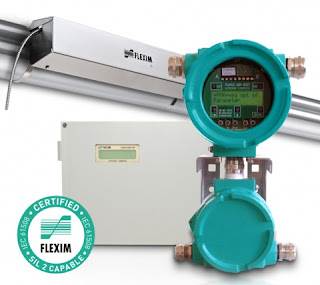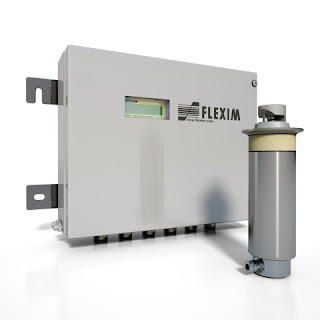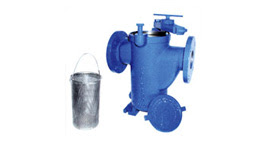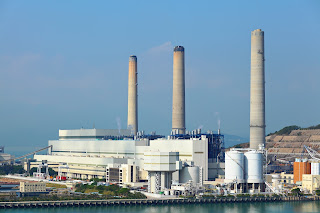Sponsored by M.S. Jacobs & Associates, a manufacturer’s representative and distributor of industrial instrumentation, control valves & process controls. Located in Pittsburgh, Pa. and covering Western Pennsylvania, West Virginia, and New York. Representing top lines in pressure, temperature, level, flow, analytical instruments and industrial valves.
Telephone: 800-348-0089 or MSJacobs.com
In-Line Process Refractometer
Refractometry, a combination of physics, materials, and chemistry, is a measurement technique which determines the composition of known substances by means of calculating their respective refractive indexes (RI). RIs are evaluated via a refractometer, a device which measures the curve, or refraction, resulting when the wavelength of light moves from the air into and through a tested substance. The unitless number given by the refractometer, usually between 1.3000 and 1.7000, is the refractive index. The composition of the substance is then determined with a comparison of the measured RI to standard curves developed for the substance. There are four general types of refractometers: digital, analog, lab, and inline process. Although refractometry can measure a variety of substances, the most common group of known substances to calculate is liquids. Liquid based continuous processes benefit from the use of an inline process refractometer to provide real time data about process output or intermediate steps.
The ultimate focus of industrial refractometry is to describe what is in a final product or output of a process step. A field which relies directly on the results of refractometry is gemology. Gemological refractometry is crucial for accurately identifying the gemstones being classified, whether the gemstones are opaque, transparent, or translucent.
Other common examples of industrial refractometry uses include measuring the salinity of water to determine drinkability; figuring beverage ratios of sugar content versus other sweeteners or water; setting eye-glass prescriptions; understanding the hydrocarbon content of motor fuels; totaling plasma protein in blood samples; and quantifying the concentration of maple syrup. Regarding fuels, refractometry scrutinizes the possible output of energy and conductivity, and for drug-testing purposes, refractometry measures the specific gravity, or the density, of human urine. Regarding food, refractometry has the ability to measure the glucose in fruit during the fermentation process. Because of this, those in food processing can know when fruit is at peak ripeness and, in turn, also understand the most advantageous point in the fruit’s lifetime to put it on the market.
The determination of the substance composition of the product examples listed above all speak to the purpose of quality control and the upholding of standardized guidelines. Consumers rely on manufacturers not only to produce these products safely and in vast quantity, but to deliver the customer a consistent taste experience when the product is consumed. Brand marketing success relies on maintaining the standards for the composition of substances that comprise the product. One could argue that an in-line process refractometer is actually a marketing tool of some sort, at least to the extent that it is employed to maintain consistent product quality.
Equipment manufacturers have developed numerous refractometer configurations tailored to specific use and application. Each has a set of features making it the advantageous choice for its intended application. Product specialists can be invaluable sources of information and assistance to potential refractometer users seeking to match the best equipment to their application or process.
Ultrasonic Clamp-On Flowmeter with SIL 2 Rating
 |
| FLUXUS F/G70X and F/G80X series meters Courtesy Flexim |
Ultrasonic flow measurement devices employ a comparatively recent technology to measure gaseous or liquid flow. Whether the transit time differential or Doppler method is utilized, ultrasonic flow meters have a distinctive characteristic in that they can be deployed in a form factor that does not require insertion into the fluid. A common installation method is to clamp the ultrasonic transducer assembly onto the exterior of a pipe. This makes the technology attractive for applications that involve adding a flow measurement point to an existing piping system.
Flexim, a globally recognized leader in ultrasonic flow measurement, offers a number of permanent and portable units for measuring liquid and gaseous flow rates. Some of their instruments have been certified as SIL 2 capable, along with a host of other third party certifications. The product range includes simple and accurate instruments designed for general industrial use, and extends to multi-beam units intended for applications, such as custody transfer of fluids, that require the highest accuracy and overall performance levels.
Share your flow measurement challenges and requirements with instrumentation specialists, combining your own process knowledge and experience with their product application expertise to develop effective solutions.
Inline Refractometers Used in Commercial Food and Beverage Production
 |
| Hygienic process in-line refractometer with control unit and flow cell Courtesy Flexim |
Refractometry is a useful measuring method for many liquid processing operations. It is used for concentration and density analysis of process liquids. Portable sample processing units are available, but high volume continuous flow operations benefit from the use of in-line refractometers that do not require manual sampling and handling of process liquids. The measurements are produced in real time to continuously verify the fluid quality characteristics.
Food and beverage manufacturers use refractometry to determine the concentration of sugar, ethanol, ascorbic acid, pectin, artificial sweeteners and other components in their products. Close control of component concentration is a necessary part of delivering a consistent taste in finished products. Large investments are made to establish brand name products, and delivery of a consistent customer experience each time a product is consumed is key to developing and growing a brand. This is a solid example of a marketing based application of science and technology to industrial processing.
In-line refractometers for food and beverage applications will have specific features and construction to make them suitable for hygienic processing. The avoidance of contamination is first and foremost a requirement. Additionally, design features that reduce maintenance requirements and retain the needed measuring accuracy through extended periods of usage add value to the unit and should be a consideration when selecting an in-line refractometer.
Share your in-line refractometry applications and challenges with product specialists, combining your process experience and knowledge with their product application expertise to develop effective solutions.
Simplex vs. Duplex Strainers For Industrial Liquid Processing
 |
| Duplex basket strainer, shown with one basket removed Courtesy Eaton Friltration |
Good practice dictates that the tolerance of the system for particulate matter should be determined and a properly sized and configured device be put in place to remove particulates larger than greatest allowable size. Considerations for connection size and type, construction material suitability for the process media, flow rate, pressure drop, and filter holding capacity should all be a part of the product selection criteria.
 |
| Simplex basket strainer with access cover and basket removed Courtesy Eaton Filtration |
Fluid filtration can be an important part of keeping a process in operation, reducing wear and tear on piping system components and equipment. Share your process fluid filtration challenges and requirements with application specialists, combining your process knowledge and experience with their product application expertise to produce effective solutions.
Hybrid Solar TEG Power Systems
 |
| Hybrid system shown in remote installation Courtesy Gentherm Global Power Technologies |
A hybrid solar TEG (thermoelectric generator) can overcome some of the shortcomings of a pure PV system by delivering battery charging current during conditions when solar generated power is insufficient. The TEG uses heat from burning fuel to produce electric power, and can deliver charging current when the PV portion of the system fails to provide sufficient output.
- Extended periods of bad weather. While this scenario can be compensated for with a larger battery array, there is still a limit to the performance period. Larger battery banks increase unit cost, size and weight.
- Extreme low temperature. Battery capacity decreases during cold weather, requiring a larger battery array to provide design power output and reserve.
- Low solar exposure during certain times of the year, requiring more solar panels to accomodate the system power requirements during times of reduced sunlight. This increases unit size and capital cost.
Critical power systems must be designed to deliver sufficient power under all environmental conditions that can be experienced at the installation site. This drives pure PV system designers to substantially oversize panel and battery arrays to assure power delivery throughout an entire year. A hybrid solar TEG system does not need to have the enormous headroom built into the design that a pure PV does. The TEG can produce power at a known rate, regardless of the surrounding environmental conditions. The potential benefits from the hybrid power system include:
- Reduction in solar panel array size and cost
- Lower battery count, with reduction in capital cost, replacement cost, unit size and weight
- Longer battery life
- Less on-site fuel vs. a conventional fuel-based system
- No more than once-per-year maintenance visits
- Increased reliability over a pure PV installation
Share your remote installation power requirements and challenges with a product application specialist and bring the benefits of a hybrid solar TEG power system to your operation.
Switching Inductive Loads With Relays and Solid State Devices in Process Control
 |
| Switching devices must be properly protected for longevity |
The application paper provides a good explanation of what an inductive load is, and how it can impact the performance and longevity of a switching device. The document further explains how to offset the potentially damaging impact of an inductive load on a connected switching device, with specific examples and recommendations on how to put the protective measures in place. It is useful information.
The paper is provided below. Share your I/O and other process measurement and control challenges with application specialists, combining your own process knowledge with their product application expertise to develop effective solutions.
Selecting the Right Temperature, Pressure, or Differential Pressure Switch
 |
| Temperature, pressure, and differential pressure switches come in a wide variety of configurations Courtesy Ashcroft |
Temperature, pressure, and differential pressure switches connect to a process and change their switch position when a setpoint condition is reached. The are simple to understand, easy to install, low in cost, and require little maintenance of attention. The switches are available in an extensive array of configurations, with options to fill out almost any application requirement.
Ashcroft, global supplier of temperature and pressure switches, has produced a simplified guide that enables a designer or specifier to quickly focus their search on the right product. It is provided below for your use. Alternately, you can always share your process measurement and control requirements and challenges with product application specialists, combining your own process knowledge with their product expertise to develop effective solutions.
CSB Case Study of Industrial Plant Heat Exchanger Explosion
 |
| Two heat exchangers at chemical plant |
The U.S. Chemical Safety Board, or CSB, is an independent federal agency that investigates industrial chemical accidents. Below, find one of their video reenactments and analysis of an explosion that occurred at a Louisiana chemical processing plant in 2013. A portion of the reenactment shows how a few seemingly innocuous oversights can combine with other unrecognized conditions that result in a major conflagration.
Check out the video and sharpen your sense of awareness for potential trouble spots in your own operation.
Improved Level Measurement Contributes to Reduced Heat Rate in Steam Production
 |
| Minimizing heat rate and emissions for steam plants |
A major contributor to heat rate reduction is the recovery of heat from the process and transference of that heat into the boiler feedwater. A sizable feedwater preheater of the shell and tube type is used to recover the heat. Shell and tube heat exchanger efficiency can be maximized with accurate control of liquid level.
Magnetrol, globally recognized leader in level measurement technology, makes the case for using guided wave radar level measurement technology as the most advantageous means for this application. The video below describes the process and how the guided wave radar level transmitter can provide the best performance.
Magnetrol has an information kit devoted to heat rate reduction. Share your steam system and level measurement challenges with a product specialist, and ask how you can get the Heat Rate Reduction Kit. Combining your facility and process knowledge with the product application expertise of a specialist will result in effective solutions.
Subscribe to:
Comments (Atom)